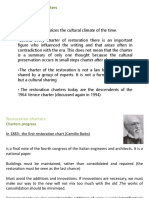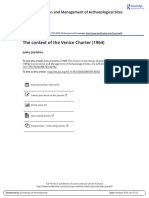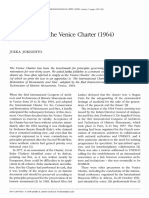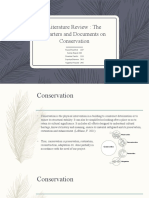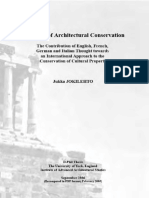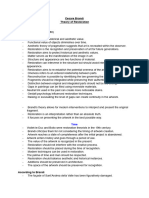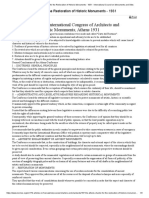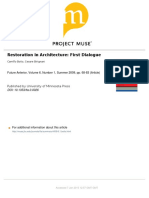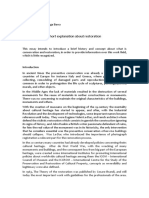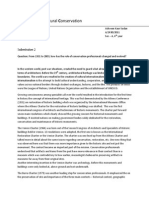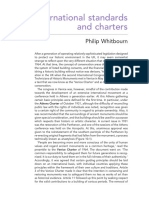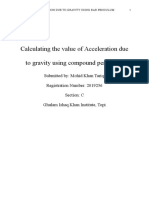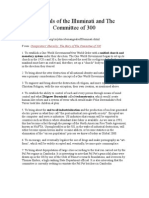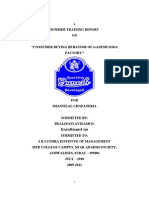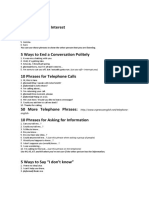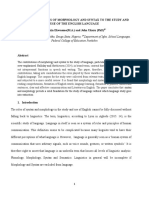0% found this document useful (0 votes)
353 views4 pagesAthens Charter 1931: Restoration Principles
The document discusses the history and principles of architectural restoration and conservation. It covers the contributions of Italian theorist Gustavo Giovannoni who helped formulate the 1931 Athens Charter which emphasized preserving the authenticity and artistic life of historic buildings. The Charter distinguished restoration approaches including consolidation, recomposition, liberation, and completion/renovation. It also discusses post-World War 2 developments in Italy by Argan and Brandi regarding conservative and artistic restoration, as well as the 1964 Venice Charter which reflected an emphasis on conservation over reconstruction.
Uploaded by
Mauricio Senior RamírezCopyright
© © All Rights Reserved
We take content rights seriously. If you suspect this is your content, claim it here.
Available Formats
Download as DOCX, PDF, TXT or read online on Scribd
0% found this document useful (0 votes)
353 views4 pagesAthens Charter 1931: Restoration Principles
The document discusses the history and principles of architectural restoration and conservation. It covers the contributions of Italian theorist Gustavo Giovannoni who helped formulate the 1931 Athens Charter which emphasized preserving the authenticity and artistic life of historic buildings. The Charter distinguished restoration approaches including consolidation, recomposition, liberation, and completion/renovation. It also discusses post-World War 2 developments in Italy by Argan and Brandi regarding conservative and artistic restoration, as well as the 1964 Venice Charter which reflected an emphasis on conservation over reconstruction.
Uploaded by
Mauricio Senior RamírezCopyright
© © All Rights Reserved
We take content rights seriously. If you suspect this is your content, claim it here.
Available Formats
Download as DOCX, PDF, TXT or read online on Scribd
/ 4



